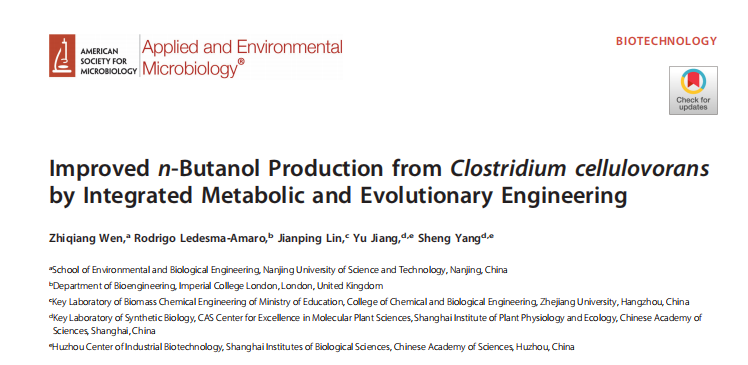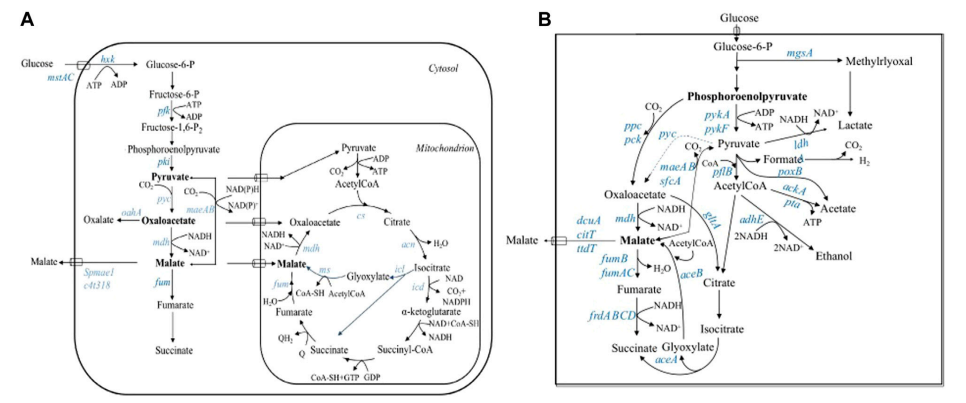
Pleuromutilin congeners is a broad-spectrum diterpenoid antibiotic produced by Clitopilus passekerianus and related fungi. In order to develop the biotechnology potential of such natural products, it is crucial to fully understand their biosynthetic pathways. Previously, the pathway for biosynthesis of pleuromutilin congeners has been determined (Figure 1). In this article, the author reports two pathways involved in the shunting of Pl sdr and Pl atf, and the metabolites of these pathways are isolated and identified through heterologous expression in Aspergillus oryzae. The author isolated three novel homologues of pleuromutilin congeners and studied their antibacterial activity, as well as the antibacterial activity of other derivatives produced through semi synthetic methods. The author found that the absence of functional groups (C-3 ketone group, C-11 hydroxyl group, or C-21 ketone group) in the framework of pleuromutilin congeners affects the antibacterial activity of its homologues. This study expands the biosynthesis of pleuromutilin congeners and provides a pathway for combining synthetic biology and synthetic chemistry to develop novel pleuromutilin congeners analogues.

Experimental result
Biosynthesis and Separation of Novel pleuromutilin congeners Homologous Compounds
The author first studied the substrate tolerance of pleuromutilin congeners biosynthetic enzymes. The author used A. oryzae GC, which is the core genes of pleuromutilin congeners biosynthesis Pl ggs and Pl cyc, as hosts (capable of producing pleuromutilin congeners terpene skeletons), to further express downstream biosynthetic genes of pleuromutilin congeners gene clusters and isolate corresponding products (Figure 2, Table 1).

Metabolites 9 and 10 generated through feeding experiments
The author found new products 9 and 10 in heterologous expression strains that lack Pl-p450-1 or Pl-sdr pleuromutilin congeners gene clusters. However, the final hydroxylation of C-22 catalyzed by Pl-p450-3 did not occur. To further investigate this reaction, the author fed 8 and 4 strains of A. oryzae AP3 (containing Pl-p450-3 and Pl-atf genes), respectively. Metabolite analysis confirmed the conversion of 8 to 9 and 4 to 10, but no homologues of C-22 hydroxylation were detected.
Antibacterial activity testing of a novel homologous compound of pleuromutilin congeners
The author conducted Bacillus subtilis ATCC 6633 antibacterial activity testing on the isolated novel homologous compound of pleuromutilin congeners, and compared it with a known portion of intermediates. Pleurocutilin (1) showed the highest antibacterial activity, followed by 6 (the C-14 extension of the pleuromutilin congeners antibiotic only had a small hydrophobic interaction with bacterial ribosomal nucleotides) (Figure 3). On the contrary, the loss of the C-21 ketone group can have a significant impact on biological activity, as shown by the reduced inhibitory activity of 3, 4, 7, and 10 (this is consistent with the observation of the interaction between pleuromutilin congeners and ribosomal nucleotides, where it is known that the C-21 ketone group forms a hydrogen bond network with G2061 in the 23S RNA domain V).

The activity of 5 is about half that of pleuromutilin congeners, while the activity of intermediates 4 and 3, which reduce ketone groups to hydroxyl groups or remove hydroxyl groups from C-3, is almost completely lost. The loss of 11 hydroxyl groups (known to form hydrogen bonds with G2505 phosphate in the 23S RNA domain V3) also leads to a significant decrease in the biological activity of 7 and 8, although 8 exhibits a slightly stronger inhibitory effect due to the presence of 11 hydroxyl groups. Similar to the intermediate of pleuromutilin congeners, a decrease in antibacterial activity was also observed in 10 and 9 compared to 14-O-acetyl pleuromutilin congeners 6, indicating the importance of C-3 ketone and C-11 hydroxyl groups for biological activity (Figure 4).
Feed 14 into the A. oryzae AP3 strain to further functionalize the C-14 side chain and produce a new semi synthetic analogue 15. The antibacterial activity of compound 15 against Bacillus subtilis ATCC 6633 was determined. Compared with 6, a significant decrease in activity was observed when the five membered ring was functionalized by C-3 methyl and C3-C4 double bonds (Figure 3). Finally, the author concludes that truncating the three functional groups C-3 ketone, C-11 hydroxyl, and C-21 ketone of pleuropterin is crucial for maintaining the biological activity of its analogues.

Summary
Biosynthetic genes can be expressed in different combinations to produce truncated homologues of pleurotus, which has not been reported in C. passekerianus.
Three new homologues of pleuromutilin congeners 8, 9, and 10 were isolated. The results indicate that some pleuromutilin congeners biosynthetic enzymes have substrate breadth, which makes them potential biocatalysts for producing novel pleuromutilin congeners analogues.
The expression of heterologous genes in Aspergillus oryzae has been proven to be a method for developing and modifying analogues of pleuromutilin congeners. This strategy, combined with chemical synthesis, opens up the possibility of producing new semi synthetic pleuromutilin congeners.









